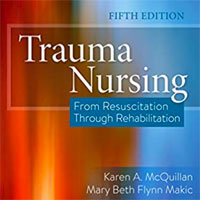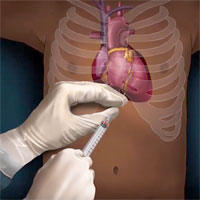Tag: trauma

Trauma Nursing: From Resuscitation Through Rehabilitation
Learn to provide state-of-the-art care to any patient in any setting with the most comprehensive trauma nursing resource available. Using the unique cycles of trauma framework, Trauma Nursing: From Resuscitation Through... read more

Nonoperative Management of Splenic Injury of Patients with Reduced Consciousness is Safe and Feasible in Well-equipped Institutions
This study shows that NOM for blunt splenic trauma is a viable treatment modality in well-equipped institutions, regardless of the patients mental status. However, the presence of neurologic impairment is associated with... read more

An assessment of repeat computed tomography utilization in the emergency department in the setting of blunt trauma
Two CT scans performed during blunt trauma encounters demonstrated mixed benefit and were associated with an increased hospital LOS. Additionally, IV contrast was associated with lower rates of AKI. Of 5787 patient encounters,... read more

Outcomes of VV ECMO When Stratified by Age
The purpose of this study was to evaluate survival to hospital discharge for patients on venovenous extracorporeal membrane oxygenation (VV ECMO) when stratified by age. We performed a retrospective study at single, academic,... read more

When Brains Collide: What Every Athlete and Parent Should Know About the Prevention and Treatment of Concussions and Head Injuries
There is nearly a 20% chance that you or someone close to you will suffer a concussion this year. Whether they are in a car accident, fall off their bike, or suffer a helmet-to-helmet hit at football practice, over 30%... read more

Family Care Rituals in the ICU to Reduce Symptoms of PTSD in Family Members
Offering opportunities such as family care rituals for family members to be involved with providing care for family members in the ICU was associated with reduced symptoms of post-traumatic stress disorder (PTSD). This... read more

Critical Care Doctors Placed Humans in Suspended Animation For The First Time
Critical care doctors have placed humans in suspended animation for the first time, as part of a trial in the US that aims to make it possible to fix traumatic injuries that would otherwise cause death. Samuel Tisherman,... read more

Use of Vasopressor Increases the Risk of Mortality in Traumatic Hemorrhagic Shock
Use of vasopressor for traumatic hemorrhagic shock was associated with mortality after controlling for biases (trauma severity; volume of fluid resuscitation). Among 236,698 trauma patients, 3,551 were included in the... read more

Dispatcher-assisted Cardiopulmonary Resuscitation for Traumatic Patients with OHCA
Dispatcher-assisted cardiopulmonary resuscitation (DA-CPR) was not associated with better outcomes for traumatic out-of-hospital cardiac arrests (OHCA) in achieving a short-term sustained return of spontaneous circulation... read more

Epidemiology of Clinically Relevant Bleeding in Critically Ill Adolescents
Clinically Relevant Bleeding (CRB) is common in critically ill adolescents who are at high risk of venous thromboembolism (VTE). Admission after trauma or surgery can be used to stratify the risk of CRB in this population.... read more

Primary Management of Polytrauma
This well-illustrated book describes a practical approach to the primary management of patients who have multiple injuries, or polytrauma, with the aim of providing medical and paramedical personnel with the knowledge required... read more

Pericardiocentesis During Cardiopulmonary Resuscitation
In this video, Dr. Traci Wolbrink reviews the procedural steps to performing Pericardiocentesis as well as reviewing indications, contraindications and risk factors for patients experiencing pericardial effusion. ... read more

Early Norepinephrine Has Potential for Septic Shock
Standard sepsis algorithms have suggested completing a fluid bolus before starting vasopressors in patients with septic shock, but multiple observational trials have shown an association between early vasopressor use and... read more

Identification of Subclasses of Sepsis that Showed Different Clinical Outcomes and Responses to Amount of Fluid Resuscitation
Sepsis is a heterogeneous disease and identification of its subclasses may facilitate and optimize clinical management. This study aimed to identify subclasses of sepsis and its responses to different amounts of fluid resuscitation.... read more








